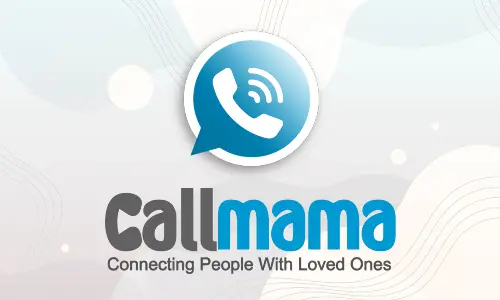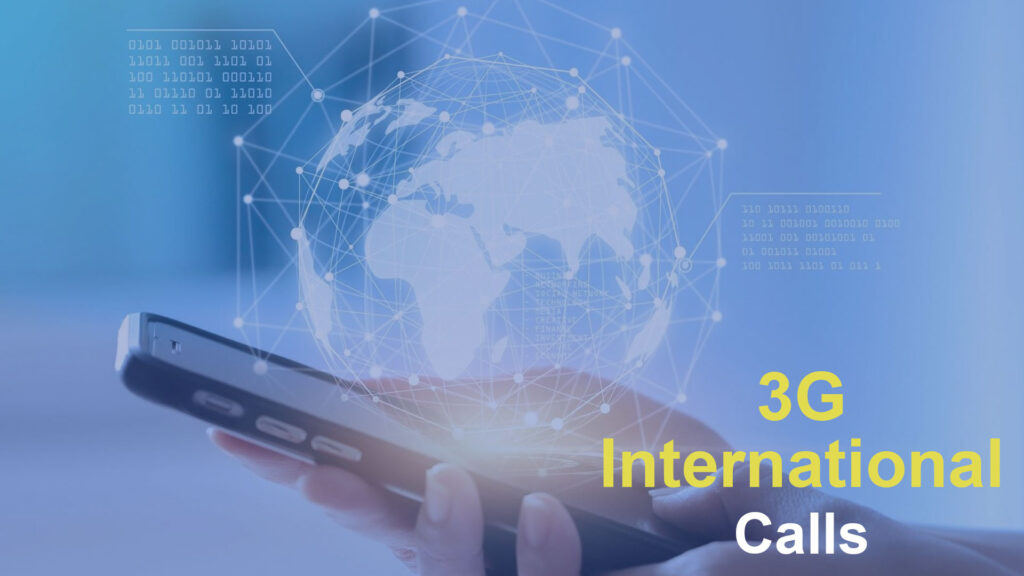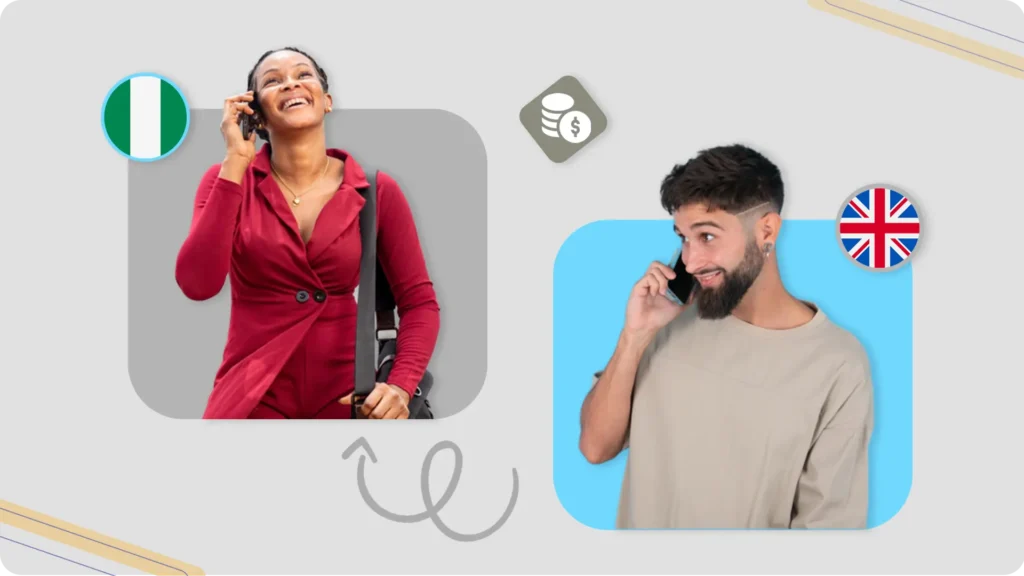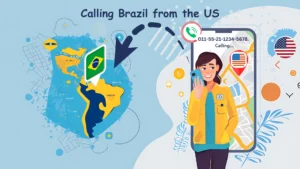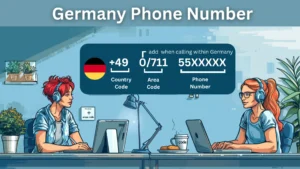Why 3G International Calls Fail and What You Can Do
The 3rd generation of mobile telecommunications technology, known as 3G, brought faster Internet speeds and enabled activities like video calling, web browsing, and streaming media on smartphones. When 3G networks spread globally in the early 2000s, it also allowed for international voice calls between 3G-enabled mobile phones. However, users soon encountered various problems making and receiving 3G international calls which led to frustrations over call quality, reliability, and cost issues.
This article provides an overview of the key problems experienced with 3G international calls, and explores some potential solutions to improve the quality and reliability of calls.
Common 3G Call Quality Problems
One of the most common complaints about making 3G international calls is simply the call quality. Several factors can contribute to poor or unstable call quality:
Low Data Transmission Rates
The data transmission rates supported on 3G networks are slower compared to 4G LTE networks today. This can mean calls over a 3G connection experience jitter, latency, audio breakups. The low bitrates aren’t ideal for voice calls.
Call Drops and Audio Issues
With an 3G international calls, a stable connection is not guaranteed. It’s not uncommon for 3G international calls to suddenly drop or for the audio quality to become robotic sounding or distorted mid-call.
Network ‘Blackspots’
There are many regions globally that still lack strong 3G coverage. These network ‘blackspots’ mean international 3G call connections may fail or quickly drop if a signal is lost when traveling or if either caller is in poor reception area.
Connection and Compatibility Problems
Beyond call quality, there are other connection issues with 3G international calls:
Failed Call Connections
Establishing a 3G call in the first place can be hit or miss, with failed call attempts common. This may be due to network congestion, device incompatibilities, or configuration issues.
App Incompatibility
Some apps may not be optimized to make international calls over 3G networks leading to call failures. Apps may incorrectly use 2G or have other compatibility issues.
‘Keep Talking’ Function Failures
3G networks should switch international calls to 2G if signal is lost, under ‘Keep Talking’. However, this often fails for 3G callers, leading calls to abruptly drop whenever they pass through an area with weak 3G coverage.
Solutions for Improving 3G International Calls
While 3G call quality and reliability issues persist today, there are ways users can improve their international calling experience:
Use VoIP Calling Apps
Switching to VoIP apps like Skype or WhatsApp for international calls typically provides superior quality compared to standard 3G calling. Links to WiFi networks further enhance quality.
Deploy Signal Boosters
For regions with poor 3G reception, a cellular repeater or signal booster can amplify weak mobile signals to improve call connectivity and quality. Dual-band boosters support legacy 3G and new 4G networks.
Upgrade 3G Phones
Newer 3G mobile phones feature improved components optimized for international network compatibility and call quality compared to older models. Purchasing an updated 3G device can provide better performance.
Use Calling Cards or Apps with Favorable Rates
To save on high 3G call costs, calling cards or apps like Callmama and Rebtel can provide discounted per-minute rates by assigning local access numbers.
The Call Quality Problems Plaguing 3G International Calls
The advent of 3G networks enabled faster data speeds and new capabilities like video calling, web browsing, and media streaming on mobile devices. But for international voice calls, 3G often falls short in providing reliable high-quality connections. This article examines the key factors behind the call quality issues frequently experienced when placing 3G international calls.
Low 3G Data Transmission Speeds
One major contributor to poor 3G international calls quality is the relatively slow data transmission rates supported on 3G networks. While fast enough for basic web browsing and emails, these networks were not designed with optimal voice calling in mind.
The maximum data speeds of 3G networks typically top out at around 21 Mbps. However, real-world speeds are often much lower, averaging 0.5 – 1.5 Mbps in many areas. These low to moderate bitrates mean voice data suffers from latency, jitter, and audio compression artifacts when transmitted over 3G connections. The end result is international calls plagued by robotic-sounding voices, echoes, static, and drops.
4G LTE offers major improvements, with peak download speeds over 10x faster than 3G. This extra bandwidth provides a much more reliable connection for activities like HD video streaming. But many regions still lack extensive 4G coverage, leaving 3G networks strained for demanding applications like international calling.
Frequent Call Drops
Another common complaint about 3G international calls is their tendency to abruptly drop mid-call without warning. This often occurs when the mobile device briefly loses 3G signal, such as when passing through an area of weak coverage.
Unlike domestic calls which can gracefully hand-off between cell towers, international calls over 3G do not easily reestablish connections once lost. 3G networks utilize separate core network infrastructure for domestic vs international routing. This makes smoothly transferring an active international 3G call much more difficult if the signal is interrupted.
The result is international calls over 3G networks are especially prone to suddenly dropping when there are any hiccups in coverage. This remains an inherent limitation in the way legacy 3G infrastructure manages active voice connections.
Coverage “Blackspots”
Coverage gaps or “blackspots” with weak 3G reception present another challenge for international callers. In rural areas or when traveling, users often pass through regions or buildings where 3G signal strength is poor. But a consistent strong 3G connection is crucial for maintaining an active international call.
Unlike domestic calls which may gracefully downgrade to 2G networks when 3G coverage drops, international calls lack this flexibility. They require keeping a 3G connection. Losing that 3G signal, even briefly, often means the international call immediately fails.
This highlights the importance of extensive and reliable 3G coverage for successful international calling. But 3G blackspots remain common in many areas. Again, future 4G and 5G network expansions will continue improving overall coverage and call robustness. But 3G deficiencies persist today.
The Connection Challenges Plaguing 3G International Calls
Beyond call quality, 3G international callers often face difficulty just establishing and maintaining a usable voice connection. Technical limitations in how 3G networks handle international call sessions lead to frequent failed call attempts, app compatibility problems, and dropped connections.
The Difficulty of Obtaining a 3G Connection
A common frustration with 3G international calling is simply connecting the call in the first place. Users may encounter frequent failed call attempts even when showing full 3G signal strength. Several factors account for this connection difficulty:
Network Congestion
At times of peak usage, 3G networks can become congested with heavy data and call traffic. This strains available bandwidth, making it harder to establish new international call sessions. Domestic calls get prioritized, so international calls are more likely to fail during congested periods.
Configuration Issues
To enable international calls, mobile devices and networks require proper configuration of parameters like APN settings, roaming permissions, and voicemail servers. If these are set incorrectly, 3G international call attempts may fail or fallback to 2G calling.
Device Incompatibility
Some older 3G mobile devices were not designed properly for making international calls over 3G data networks. Lacking full compatibility can lead to failed international call attempts even if domestic 3G calls work fine.
The Problem of Maintaining a Stable 3G Connection
Even after initially connecting an international 3G call, maintaining a usable connection with good voice quality is not guaranteed. Call stability issues stem from:
Weak Local 3G Coverage
Areas with marginal 3G reception see higher instances of choppy audio, echoes, and sudden call drops as voice packets are lost. This highlights 3G’s sensitivity to signal strength for stable international calls.
Network Handoffs
When moving across cell tower boundaries during a 3G international calls, the handoff transition can easily fail – unlike more reliable domestic handoffs. This again causes the call to abruptly drop.
Bandwidth Fluctuations
Variations in available 3G bandwidth can occur while on an international call, temporarily degrading call quality. This leads to periods of garbled or robotic-sounding audio as throughput drops.
The ‘Keep Talking’ Function Failure
Modern networks are designed to automatically downgrade international 3G calls to 2G when signal is lost to avoid dropping the call. This handoff is known as the “Keep Talking” function. However, this transition often fails on 3G networks.
The changeover relies on precise timing and signaling between multiple elements of the voice network. Any glitch in this complex transfer can cause the call to prematurely end instead of sustaining the conversation by switching to 2G.
The High Price of 3G International Calls
For all the technical frustrations of poor call quality and unreliable connections, 3G international calls also comes with a high financial cost compared to some alternatives. Both the baseline call rates and complex billing practices can quickly make 3G international calls expensive.
VoIP Calling Offers Substantial Savings
One of the major appeals of using dedicated VoIP calling apps is the significant cost savings compared to standard 3G calling rates. Services like Skype, WhatsApp, and Viber provide inexpensive pricing models for international calls to mobile numbers and landlines.
For example, Skype charges as little as $0.023/min for calls to certain countries on mobile and landline numbers. Comparatively, averaging 3G carrier rates shows charges between $1-2/min are common for calling the same destinations. This makes Skype nearly 50 times cheaper per minute in some cases.
Other VoIP apps offer flat monthly rates for international calling without per-minute fees. With savings like these over 3G, it’s no wonder many consumers choose to make international calls exclusively using voice over IP services.
Complex and Confusing 3G Billing Practices
Another pain point with 3G international calls is the convoluted billing practices of many mobile carriers. International call rates frequently:
- Vary by specific country destination
- Differentiate between calling mobile phones vs. landlines
- Have extra charges like connection fees per call
- Have different day vs. night and weekday vs. weekend rates
There are often many footnotes and caveats around these fees. Many consumers complain these rate tables are overly complex and make it nearly impossible to estimate costs when budgeting for 3G international calls. The unpredictable bills that result cause frustration.
Improving International Calls by Switching to VoIP
For many users frustrated with 3G international calls quality, reliability, and cost issues, migrating international calls over to Voice over IP (VoIP) services provides an attractive solution. By leveraging the technical advantages and cost savings VoIP offers, users can enhance their overall international calling experience.
VoIP Calling Apps Offer Clear Benefits
Dedicated VoIP calling apps provide a compelling way to avoid the pitfalls of 3G calling and replace international voice minutes. Options like Skype, WhatsApp, Viber, and Google Voice route calls over the internet rather than cellular networks. This brings substantial advantages:
- Far cheaper international rates compared to 3G carriers
- More reliable connections utilizing WiFi or broadband
- Better voice quality with HD calling features
- Built-in end-to-end encryption for privacy
These apps make transitioning international call minutes easy while realizing major cost savings and quality improvements. Certain apps also allow porting an existing phone number to use as the caller ID when making VoIP calls.
WiFi Enhances VoIP Call Quality
When using VoIP apps over a cellular data connection, linking the mobile device to any available WiFi network helps further enhance call quality and reliability. This removes potential congestion if too many users are sharing a cellular tower.
WiFi also provides lower latency and jitter levels compared to 3G/4G networks. For users on unlimited home data plans, VoIP apps transforming a WiFi network into essentially a free international calling service.
Boosting Signals and Upgrading Phones for Better 3G Calls
For consumers still reliant on making 3G international calls, solutions exist to enhance call connectivity and voice quality. Approaches like deploying signal boosters and upgrading to newer 3G mobile devices can help strengthen networks and device performance.
Signal Boosters Fill in Coverage Gaps
Weak cellular signals present a major issue for maintaining reliable 3G international calls. But deploying a signal booster provides an effective remedy. These devices amplify existing 3G/4G signals to expand and fill in coverage gaps.
Consumer signal boosters are standalone appliances installed in homes or vehicles. They contain an exterior antenna to collect signals from nearby cell towers, amplify the signals, then rebroadcast them locally using an interior antenna. This can significantly extend in-building and in-vehicle coverage.
Network signal boosters achieve a similar effect but on a larger scale. Operators install these high-power systems across buildings or entire blocks to bolster weak mobile signals in dense urban areas.
Advanced 3G Phones Offer Enhanced Quality
For consumers with older 3G smartphones, simply upgrading to a newer 3G device can also optimize international call performance. Latest generation 3G phones include improved:
- Radio frequency components for better sensitivity
- Noise-cancelling technology on microphones
- Antenna designs that maintain signals during handovers
- Processors and modems engineered for voice optimization
Newer generation 3G chipsets also expand compatibility with international mobile networks. This enhances support across various carriers to prevent call failures.
Calling Cards and Apps Cut Costs of 3G International Calls
For mobile customers frustrated by costly international call rates from their standard 3G providers, alternatives like Rebtel and Callmama offer welcome cost savings. But how do these popular international calling apps compare?
An Overview of Rebtel and Callmama
Both Rebtel and Callmama are free calling apps focused on providing economical international call rates from 3G smartphones and devices.
Key Similarities
- Offer discounted per-minute pricing reduced 40-80% versus carriers
- Local access numbers used to route international calls
- Avoid roaming and long distance fees
- Compatible with any 3G phone service
- High call quality maintained
Key Differences
- Rebtel has free app-to-app calling
- Callmama supports more countries (200+ vs. 100+)
- Rebtel rates specific to landline/mobile numbers
- Callmama offers subscriptions without ads
Both provide uncomplicated solutions just for affordable 3G international calls.
Comparison of Rates and Features
Analyzing calling rates reveals that Callmama tends to offer slightly lower per-minute pricing overall. However, Rebtel sometimes has free calling between users.
Consider calls to London:
- Callmama: $0.02/min to UK landlines, $0.03/min to UK mobiles
- Rebtel: $0.10/min to UK landlines, $0.19/min to UK mobiles
But Rebtel allows free calls between app users. Video calling is also free with Rebtel. Callmama lacks video call support.
Both offer ad-free paid subscriptions, but Callmama supports more country destinations. For maximum savings across regions, Callmama usually comes out ahead.
| App | Calling Rates to London | Other Features |
|---|---|---|
| Callmama | $0.02/min to UK landlines $0.03/min to UK mobiles |
Supports 200+ countries Ad-free paid plans |
| Rebtel | $0.10/min to UK landlines $0.19/min to UK mobiles |
Free calls between users Free video calling Ad-free paid plans |
Which App is Better?
For most cost-focused international callers, Callmama delivers slightly better overall value with lower rates to more countries. But Rebtel offers a more feature-rich experience for subscribers with free in-app communication.
Ultimately, both provide significant savings over standard 3G carriers for international usage. Downloading both free apps allows easy price comparison when dialing different regions of the world. Together, Rebtel and Callmama give global callers affordable ways to stay connected abroad.
Callmama: A Cost-Saving App for 3G International Calls
Frustrated by the high per-minute rates charged by most mobile carriers for 3G international calls? For global callers looking to reduce expenses, the Callmama app provides an easy and effective solution.
What is Callmama?
Callmama is a free calling app developed by MyCountryMobile Solutions focused on economical international calling from mobile phones. It works by assigning local access numbers which connect calls to over 200 countries worldwide.
By routing calls through these local numbers, Callmama subsidizes costs and passes significant savings to users. The company negotiates bulk calling rates and utilizes technological optimizations to reduce bandwidth usage.
The app also generates revenue through audio ads between calls and via optional premium subscriptions. These factors combine to enable reduced international calling rates without sacrificing call quality.
Main Features of Callmama for Affordable 3G International Calls
For mobile users seeking an affordable way to make international calls over 3G networks, the Callmama app provides a feature-packed solution. What capabilities make this app so useful for global calling?
Access to 200+ Countries
A major appeal of Callmama is the sheer number of international destinations supported. Users can call landlines and mobile phones in over 200 countries from the app. Major regions in Europe, Asia, Africa, Oceania and the Americas are included.
This extensive reach makes Callmama useful for both common destinations like calling family in the UK as well as more exotic locales like phoning a hotel in Thailand.
Lower Per-Minute Rates
Of course, the reduced per-minute rates are a prime feature. Callmama provides discounts of 40-80% compared to standard 3G carrier pricing for 3G international calls.
Exact rates for each country are clearly listed in the app. This transparency, coupled with Callmama’s discounted pricing, saves users substantially over costly international mobile charges.
No Hidden Fees
Callmama eliminates all the usual fees that make international calls expensive like long distance charges, connection fees and roaming surcharges. The low per-minute rates users see listed are the only costs they pay.
This straightforward billing allows customers to easily estimate their monthly international calling costs based on usage.
High Call Quality
Even with discounted pricing, Callmama maintains call quality on par with direct operator rates. Advanced compressions reduce bandwidth consumption on 3G networks while ensuring clear call audio.
Easy Account Management
Within the app, customers can easily top-up their account balance, view detailed call records, add multiple international contacts, and manage payment methods. This makes using Callmama simple and convenient.
Ad-Free Paid Plans
For a premium experience, Callmama offers affordable monthly plans without any in-call audio ads. This paid subscription delivers all the cost savings without interruptions.
Overall, Callmama’s combination of extensive country reach, reduced international rates, seamless quality, and account features make it a highly capable for 3G international calls solution. The app provides the functionality global callers need the most.
Why Callmama is the Top Choice for Affordable 3G International Calling
For mobile users worldwide, high international calling rates remain a constant source of frustration. But the Callmama app provides a way to make global voice calls over 3G while realizing major cost savings. What makes this app so beneficial for international callers?
Significant Cost Savings
The most obvious benefit Callmama delivers is considerable cost reduction versus standard 3G carriers. Per-minute rates are slashed 40-80% for calls to over 200 countries. For frequent international callers, this quickly adds up to hundreds in monthly savings.
Avoiding all the usual taxes, fees and roaming charges cellular providers add makes costs even more reasonable. The low rates Callmama offers provide substantial and uncomplicated savings.
Global Coverage
With support for calling landlines and mobile phones in over 200 nations, Callmama has customers worldwide covered. Popular destinations in Europe, Asia, Africa and the Americas as well as more exotic locales are included.
This expansive reach ensures the app can be used affordably when traveling and living abroad.
No Cellular Data Usage
Callmama does not use any of the cellular plan minutes or data allotment for international calls. All calling traffic is handled through Callmama’s optimized VoIP network.
This allows users on limited data plans to maximize the app’s savings without eating into their voice and data buckets.
Convenience
As a mobile app, Callmama provides easy cost-effective global calling while on-the-go or traveling when international calls are often needed most. No calling cards, additional devices, or passwords required.
For consumers and global businesses seeking an uncomplicated way to slash international calling costs, Callmama delivers straightforward value worldwide.
Conclusion
3G networks have not delivered an optimal international calling experience for many mobile users. The combination of call quality issues, unreliable connections, coverage gaps, and high costs have made 3G a frustrating platform for 3G International Calls.
While 4G LTE and future 5G networks will gradually improve international call capabilities, solutions exist today to enhance the 3G International Calls experience. Switching calling minutes to dedicated VoIP apps provides superior quality and significant cost savings compared to 3G carrier rates. For customers still reliant on 3G networks, deploying signal boosters and upgrading devices can also optimize 3G International Calls performance.
Apps like Callmama give users affordable alternatives for 3G International Calls over 3G in the near term. However the various shortcomings make it clear that legacy 3G technology lacks the robustness needed for reliable and economical 3G International Calls. As newer network generations expand globally, they will lay the foundation for international mobile communication with the quality, consistency, and advanced features consumers demand.

